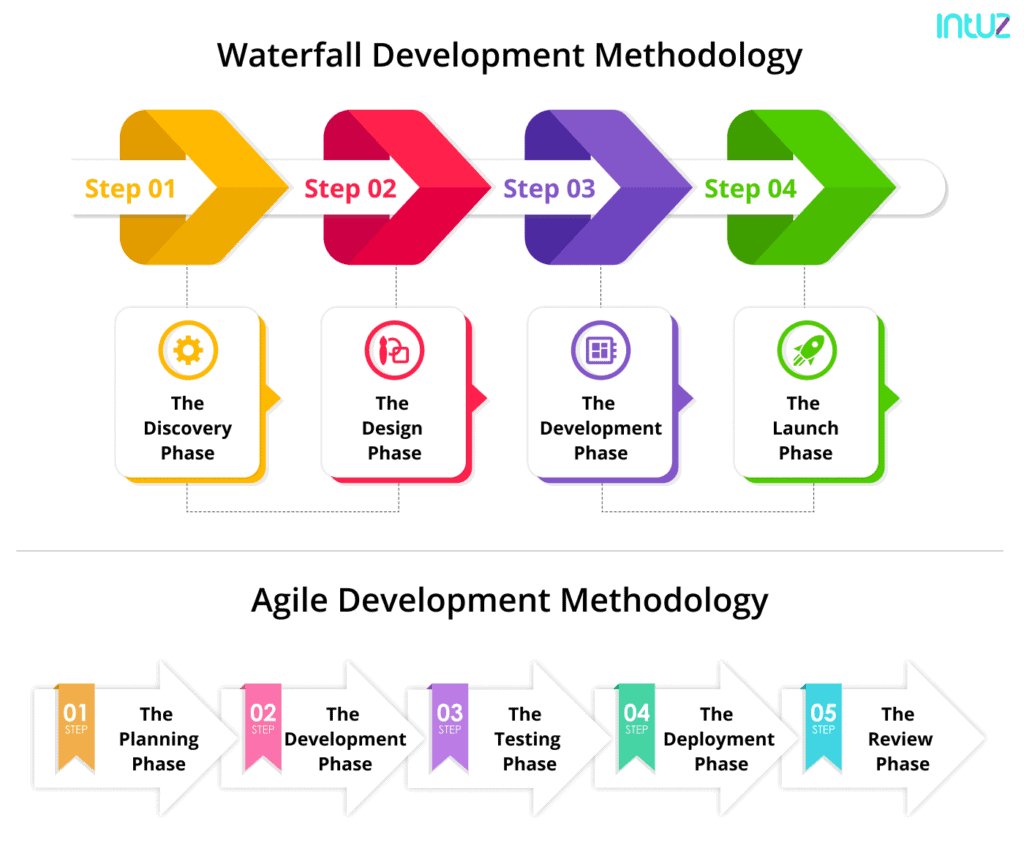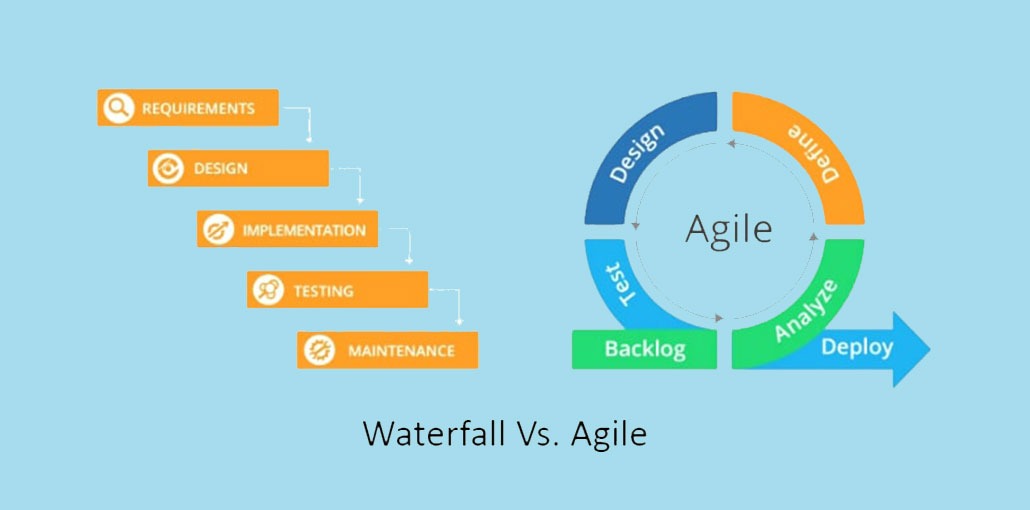We only have one perspective when we discuss the IoT’s dynamic growth and use cases in different industries. Growth and rapid development are great, but we must also look at the negative side. Companies are under immense pressure to develop innovative IoT solutions and launch apps or solutions immediately. They also have to provide regular updates and upgrades. Agile vs Waterfall which is the best methodology for IoT project.
We expect sophistication from our products and services as consumers. This reflects our collective behavior, which also shapes market dynamics. Businesses have to tackle many challenges when developing IoT solutions. Similar problems existed in the software development sector. Businesses and consumers wanted stable software applications that could be quickly deployed for various purposes. As they developed, there were many ways to manage the pressure. The most important was the introduction of software development methodology.
The IoT is in the exact same place right now. This post is for you if you are under pressure due to limited time to market or looking for ways to accelerate your IoT development.
We will discuss the most popular IoT development methods on the market today. Here we will learn about their differences, pros, and cons, and finally, decide which one is best for our next project.
Waterfall Development Methodology
This is the traditional development method that is more systematic and sequential. It is built around a series of events, as the name implies. Each event is triggered by the next, and so on until the project is complete. This is how it works.
Here are some steps to give you an idea of what waterfall methodology looks like.
- The discovery phase is where development teams identify the business requirements of clients.
- The design phase – This is where the actual product design in terms of wireframes and UI begins
- The development phase is where backend modules are constructed, coding takes place and the software goes through rigorous testing
- The launch phase – This is where the product optimization takes place for the final launch after approval by clients
Pros Of Waterfall Methodology
- It is simple and relatively easy to implement and manage.
- Team members and project managers do not need to have special skills or knowledge in order to implement the waterfall method.
- The efficiency of the method does not depend on the size or scope of the project.
- Each step and every action are clearly documented.
- Managers can accurately bill their productivity because the scope has been set up beforehand.
Cons Of Waterfall Methodology
- It can actually delay the start of projects because teams spend more time gathering details from clients.
- Teams must go back to correct a mistake in an earlier step, and then pause work on the current phase for any changes.
- Testing is not done simultaneously. It begins only after the design phase has been completed.
- It is entirely internal, which makes it less transparent in terms of collaboration.
- It does not acknowledge scope creep.
Agile Development Methodology
You will notice that the waterfall method is not as secure as it should be. Agile development methodology was born out of the efforts to correct inefficiencies and inconsistencies within the waterfall method.
The agile process is not linear, but iterative. The overall process is broken down into smaller stages or fragments. For faster completion, imagine a monolithic project broken down into smaller modules or iterations.
These sprints are often completed in a matter of days or weeks. Teams can then focus on completing the tasks on schedule. Agile methodology also has phases, much like the waterfall method. Let’s take a look at them.
- The planning phase
- The development phase
- The testing phase
- The deployment phase
- The review phase
 It might look similar to the waterfall model, but it is important to understand that the completion of any phase does not automatically trigger the next. Every team member and stakeholder is constantly in a state where they are testing, planning, developing, testing, and deploying their modules.
It might look similar to the waterfall model, but it is important to understand that the completion of any phase does not automatically trigger the next. Every team member and stakeholder is constantly in a state where they are testing, planning, developing, testing, and deploying their modules.
Pros Of Agile Development Methodology
- This model is highly adaptable and can accommodate all pivots and changes from clients.
- Agile is transparent because clients are updated weekly by teams.
- Bugs are quickly fixed because testing is ongoing. They do not have to wait until launch.
- It ensures that the IoT solution is delivered on time and without any compromises in quality.
Cons Of Agile Method
- This is great for larger projects but it would be difficult to reap the huge benefits for smaller projects.
- This model is comparatively more costly to implement than the waterfall one.
- Managers and team members need to be familiar with agile development methodologies.
- It could become chaotic if it isn’t managed well.
Also read: Top 10 Amazing Agile Project Management Tools
Why IoT Development Is Shifting To Agile
IoT is dynamic and has many solutions. IoT development is evolving dynamically towards Agile methodology for many reasons.
- IoT solutions require continuous testing and deployment to validate product functionality. The market is in a good place at the moment and any innovative idea will drive the business to launch the product to be the pioneer. Companies want to race against the clock with methodologies that can help them reduce time to market and compete with other companies. Agile is the perfect fit.
- Agile allows teams and stakeholders to automate many processes, such as building, testing, delivery, and other tasks. This allows IoT solutions (connected devices), to be consistently optimized for safety, security, and performance. Software updates are also consistent with automation.
- It’s not only the devices that must be interconnected in IoT but also the development teams. Silos can lead to tons of output and operational concerns. Agile eliminates this from the ecosystem. It encourages collaboration and communication between teams.
Agile vs Waterfall: Which Development Method Should You Prefer For Your Next IoT Project?
We believe it’s quite clear now. You might still have questions or concerns about using agile methods for your business. IoT product development. Here’s a detailed comparison of both.
Wrapping Up
Regardless of the flaws in waterfall methodology, agile is clearly the winner. Agile works because the market is agile. There are many changes in consumer behavior, markets conditions, volatility, and economies. Agile is key if you need to incorporate such huge changes into your IoT project.










Leave a comment